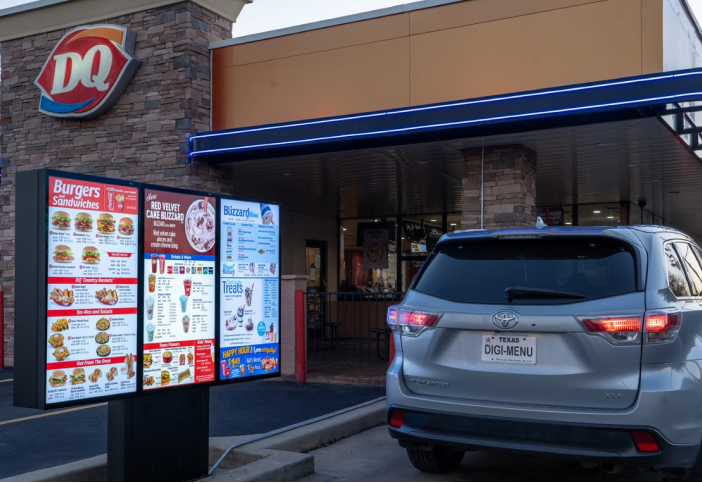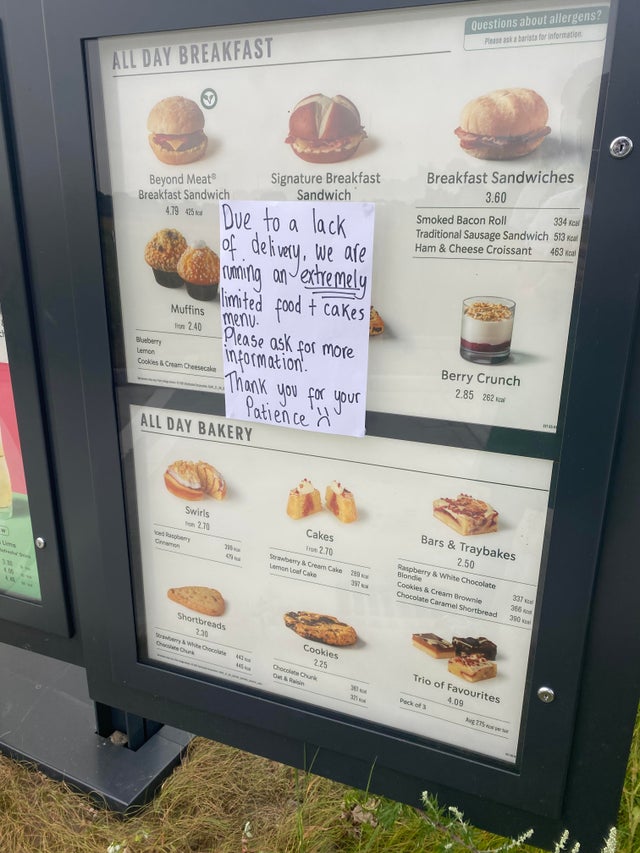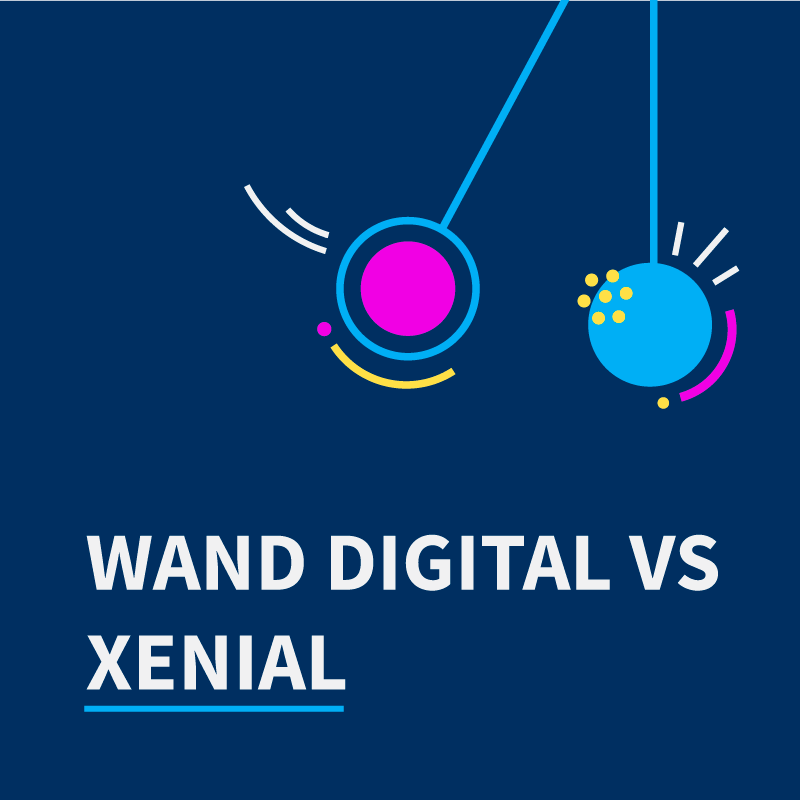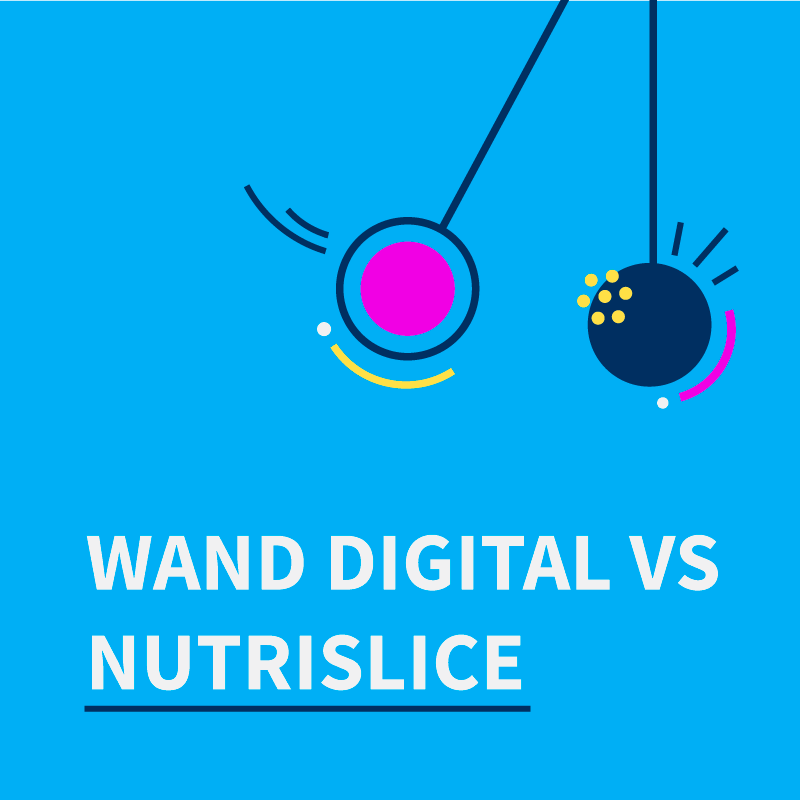Why It’s Time to Go Digital with Drive-thru Menu Boards

Fast-food drive-thrus are nestled in Americana snugly between baseball and apple pie. Since 1947, drive-thrus have been a staple in how hungry travelers eat on the road, and their value in the fast-food and casual restaurant industry has only strengthened over the past 75 years. Drive-thru menu boards and technology have evolved and adapted to changing consumer behaviors and technological advancements, and they now provide a meal and an experience without ever forcing folks to leave their cars.
The digitization of drive-thrus not only gives restaurants a competitive edge in an ever-growing industry, but it has also permanently changed how drive-thrus deliver clearer information, better experiences, and enhanced safety to customers when they need it most.
While the history of the drive-thru as we know is still a sought-after bit of nostalgia, hungry consumers have heightened expectations and desires when grabbing grub on the go. If your fast-casual restaurant hasn’t upgraded to digital menu boards at the drive-thru, it may be time to consider making the move.
The Evolution of the Fast-food Drive-thru
As ingrained as they are today in seemingly every roadside restaurant, it’s hard to imagine what the industry looked like before the drive-thru. Despite their ubiquity, this fast-food feature as we know it has only been around since mid-century—nearly three decades after White Castle debuted as the first fast-food restaurant in the US.
With 100 years under its belt, it’s safe to say that White Castle and the rest of the fast-food industry has been a hit ever since. In the 1930s, the drive-in restaurant started feeding the desire for speed and efficiency when eating on the go. Think of clip-on window trays, roller skating car-hops, and side-by-side stalls where cars would pull in, park, order, and eat without ever leaving their car.
Drive-in restaurants appeased the hurried diner, but they weren’t as great for the restaurant operator. Drive-ins required a lot of space to accommodate more cars, and they presented a finite capacity for how many people could be served. The solution? Eliminate the need for stalls and simply send people on their way with their orders.
Drive-thrus empowered restaurants to cram in more transactions with less space all while helping to keep people cruising to their destinations. By the late ‘70s, most quick-service restaurants featured a single-lane drive-thru, including McDonald’s first in 1975. The convenience was so popular that banks, gas stations, and retail stores started opening drive-thrus of their own to better serve customers. This transition has reshaped American highways, restaurants, and even cars (for instance, cup holders weren’t a common car feature until the ‘80s).
The evolution of the fast-food industry and drive-thrus works in tandem with the changing needs of the hungry consumer. And just as the invention of the drive-thru was a result of a more mobile population than ever, the evolution of drive-thrus today is a reflection of a more digital and tech-savvy consumer. Drive-thru menus have undergone a lot of change since they first popped up, and that trend isn’t about to slow down.
Modern Consumers Are Ready for Digital Drive-thru Menu Boards
America has already seen changes in drive-thrus over the decades. Some restaurants moved from single- to double-lane to accommodate more customers and get orders out quicker. Static manual menu boards were swapped out for backlit behemoths for easier nighttime ordering. Speaker systems are clearer and crisper, and some drive-thrus even show customers a receipt of their order in real time.
All of these advancements are a result of continuously improving restaurant technology coupled with changing consumer needs. Since the dawn of the internet, consumers have grown used to everything being on-demand, convenient, easy, and understandable. They expect a near-instant experience at their fingertips with increased reliance on technology.
The coronavirus pandemic has only added fuel to the fire of changing customer expectations. Indoor dining became a public health issue, which only pushed the importance of drive-thrus further. Fast-food chains with drive-thru service rushed to add more lanes, while chains without drive-thrus scrambled to add the perk for the first time ever. The pandemic shifted the drive-thru’s place in society. While it was once a nice-to-have benefit for convenience, it’s now a need-to-have feature reflecting changed norms, safety protocols, staffing, and beyond.
One thing is now clear: People rely on the drive-thru more than ever, and experts don’t think its popularity will ever return to pre-pandemic levels. This means restaurants need to find a way to get more cars moving swiftly through their drive-thru lanes in a safe way while still providing people with a delightful, branded experience.
Digital menus are going to lead the way in helping restaurants meet and exceed these new needs and expectations.
The Role of Digital Menu Boards and the Future of the Drive-thru
Similar to the speed and convenience found when drive-ins shifted to drive-thrus, static drive-thru menu boards evolving to digital signs will only enhance drive-thrus. The shift will ensure they continue meeting modern demands for decades to come. But how, exactly, will restaurant owners and operators benefit from the expense of this digital transition? Is now really the time to invest in a digital drive-thru?
Drive-thru usage had been increasingly popular before 2020, and that popularity has only surged over the course of the coronavirus pandemic. At first, drive-thrus were some of the only ways restaurants could get food to customers. As more people grew to count on the convenience, speed, and safety of the service, though, the more it rooted itself in consumer expectations. Now, customers expect better experiences at the drive-thru while restaurants try and find ways to meet those expectations.
When a fast-food owner adopts a digital menu board, they not only meet new expectations, but they also open up a world of possibilities that tip them ahead of the competition. Some ways digital outdoor menus meet modern behaviors include:
1. Speed
One major advantage to operating a drive-thru is the speed it offers customers. But with more people heading to the drive-thru throughout the pandemic, the longer customers have had to wait to order. A 2021 drive-thru study found that nearly 20% of drive-thru customers slower-than-expected experiences. This means that out of every five people stopping by, one had a bad experience. And only half of customers had a drive-thru experience that aligned with expectations.
Digital outdoor menus can take drive-thrus to maximum efficiency. Within moments, menus can be adjusted to match the time of day, changing inventory, promos, and more. With instant updates, the back-and-forth between customer and cashier can be shortened. Restaurants can serve more customers and customers experience the faster service they expect. The value of easily updateable menus was underscored by the pandemic, and the repercussions caused by static menus have never been more evident.

2. Safety
Health and safety have always played a role in the decisions restaurant operators make, and the pandemic has only amplified the importance of them. Indoor dining was shut down throughout the pandemic in order to curb the spread of COVID-19, putting drive-thrus in the spotlight.
High-functioning drive-thrus reduce human contact—a surprising priority borne from the pandemic. In a recent survey, it was discovered that half of fast-food restaurant-goers “would be willing to eliminate all human interaction when visiting a quick-service restaurant, assuming orders are received and fulfilled quickly and accurately.” Quick and accurate ordering, however, hinges on whether a restaurant has the right technology in place.
3. Customer Experiences
The customer experience has grown in importance from retail to restaurants. Just one bad experience with your brand is enough to drive a customer away for good. Even though it’s such an important factor in whether people go to your store—and come back again—it’s impossible to pinpoint one factor that makes or breaks the customer experience. Instead, this is comprised of many things your restaurant does, including safety protocols, order speed, and more.
Digital drive-thrus can enhance customer experience by impacting every part of the outdoor journey.
- Timely and updated information on a digital sign reduces confusion and frustration while ordering.
- Improved order accuracy reduces the time required to fulfill every order.
- Suggestive selling and alluring videos introduce customers to new items and create a more personalized feel.
- Reduced human interaction diminishes staffing stress for restaurant operators while decreasing stress for customers. Currently, only 14% of drive-thru customers feel like their experiences are less stressful than expected.
- Vibrant imagery and branding help reduce perceived wait times, making every journey through the drive-thru a pleasant one.
Digital outdoor signage has the power to adapt to trends shaped by consumers, current events, and beyond. Unlike static signage, the capabilities of modern digital menus give customers the experience they expect and restaurant owners the tools to provide it. With easy updates, safer service, and engaging menus, gone are the days of stressing staffing shortages or long lines.
Instead, the evolution of drive-thru tech leads to unlimited possibilities, higher order values, and happier customers. When a restaurant switches to digital menus, they’re able to compete on customer service and stand apart from the crowd.
Changing Consumer Behaviors Puts Digital Outdoor Menu Adoption into Hyper Speed
Restaurant drive-thrus that stick with static experiences, handwritten updates, and clunky operations simply aren’t going to meet customer expectations in the not-so-distant future.
The pandemic has only added to the disparity between customer expectations and reality, but a solution is here. Stores that adopt upgraded outdoor menu board technology sooner will stand out with memorable, loyalty-building experiences and bigger bottom lines. The opportunity to lead the future of drive-thru experiences lies with digital.
Ready to upgrade your drive-thru to digital?
Related Reading

Do More with Digital Displays
Scale your business, grow your brand, and delight more customers with the magic of digital menus and signs.


